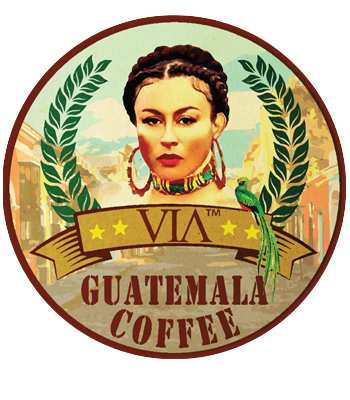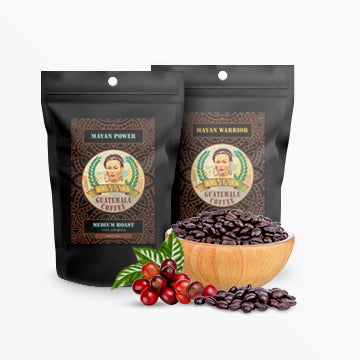Single Origin Coffee: Your Ultimate Flavor Guide in 2025

The global specialty coffee market as a whole was valued at approximately $45.97 billion in 2023, with projections for continued growth. Single origin coffee represents more than just a drink—it's a passport to unique flavor landscapes and a celebration of agricultural craft from specific regions around the world.
What Is Single Origin Coffee?
Single origin coffee refers to coffee beans sourced from one specific geographic location. Unlike coffee blends that combine beans from multiple sources, single origin coffee comes from a single farm, specific region, or particular country. This specificity allows the unique characteristics of the growing environment to shine through in every cup.
Single origin coffee beans carry distinct flavor profiles directly influenced by their terroir—the environmental conditions including soil composition, climate, altitude, and processing methods that create a specific taste fingerprint impossible to replicate elsewhere.
The Unique Advantages of Single Origin Coffee
Flavor Complexity
Single origin coffee offers an unparalleled taste experience. Beans from Ethiopia might present bright, floral notes with hints of bergamot. Colombian single origin coffee could deliver rich chocolate undertones with a smooth caramel finish. These nuanced flavors simply can't be replicated in blended coffees.
Traceability and Transparency
When you choose single origin coffee, you're not just buying a beverage. You're supporting a transparent supply chain. Most single origin coffees come with detailed information about:
-
Specific farm or cooperative
-
Exact growing region
-
Harvest date
-
Processing method
-
Farmer details
Supporting Local Communities
Purchasing single origin coffee directly impacts coffee-growing communities. By selecting beans from specific regions, consumers help support local farmers, ensuring fair compensation and sustainable agricultural practices.
What Does Single Origin Coffee Mean for Quality?
When you see "single origin" on a coffee label, it signals transparency and quality. These coffees typically undergo careful harvesting and processing by farmers dedicated to showcasing their region's distinctive characteristics. The term indicates:
-
Beans sourced from a specific farm or cooperative
-
Consistent flavor profile unique to that location
-
Higher quality standards and attention to detail
-
Greater traceability through the supply chain
Where Does Single Origin Coffee Come From?
Single origin coffee comes from major coffee-growing regions around the world, each producing beans with distinctive characteristics:
-
Ethiopia: Often featuring bright, floral notes with citrus undertones
-
Colombia: Known for medium-bodied coffees with caramel sweetness
-
Guatemala: Typically producing coffees with chocolate notes and subtle spice
-
Kenya: Famous for bold, wine-like acidity and blackcurrant notes
-
Indonesia: Recognized for earthy, full-bodied coffees with low acidity
The specific altitude, climate, and soil conditions of each region directly influence the coffee's flavor profile. Beans grown at higher elevations (above 4,000 feet) typically develop more complex flavors due to slower maturation.
How Is Single Origin Coffee Made?
The journey from coffee cherry to your cup involves several critical steps:
-
Harvesting: Farmers selectively pick ripe coffee cherries, often by hand.
-
Processing: The fruit is removed using either the washed, natural, or honey method.
-
Washed processing: Removes fruit before drying, producing cleaner flavors
-
Natural processing: Dries beans with fruit attached, creating fruitier profiles
-
Honey processing: Removes some fruit before drying, offering balanced sweetness
-
Drying: Beans are dried to optimal moisture content (10-12%)
-
Sorting and Grading: Beans undergo quality assessment and classification
-
Roasting: Skilled roasters develop custom profiles to highlight the bean's natural characteristics
-
Packaging: Freshly roasted beans are sealed to preserve flavor
This meticulous process preserves the unique regional characteristics that define single origin coffee.
How to Brew Single Origin Coffee
To fully appreciate single origin coffee, brewing technique matters significantly:
Best Brewing Methods for Single Origin Coffee
-
Pour-over (Hario V60, Chemex): Ideal for light to medium roasts, highlighting delicate floral and fruit notes
-
AeroPress: Versatile method that works well for all origins
-
French Press: Excellent for medium to dark roasts with chocolate or nutty profiles
-
Cold Brew: Works wonderfully with fruit-forward single origins
Step-by-Step Brewing Guide
-
Use freshly roasted beans (7-21 days from roast date)
-
Grind immediately before brewing (medium-fine for pour-over, coarse for French press)
-
Use filtered water heated to 195-205°F
-
Follow a 1:16 coffee-to-water ratio (adjust to taste)
-
Time your brew carefully (2-4 minutes depending on method)
Can You Use Single Origin Coffee for Espresso?
Yes, single origin coffee can make exceptional espresso, though it requires special consideration:
-
Choose medium to medium-dark roasted single origins
-
Look for beans with chocolate, caramel, or nutty notes
-
Adjust your grinder for slightly coarser grounds than typical espresso blends
-
Expect more pronounced acidity and distinct flavor notes
-
Be prepared to adjust parameters as single origins may extract differently than blends
Single origin espresso offers a unique experience where you can taste the pure expression of a specific region, though it may require more careful calibration of your espresso machine.
How to Drink Single Origin Coffee
To fully appreciate single origin coffee:
-
Start black: Try the coffee without cream or sugar first
-
Note the aroma: Smell before tasting to prime your palate
-
Sip thoughtfully: Let the coffee coat your entire tongue
-
Track flavor evolution: Notice how flavors change as the coffee cools
-
Compare: Try coffees from different regions side by side
Professional tasters often use a flavor wheel to identify specific notes, from fruity (berries, citrus) to earthy (nuts, chocolate) and everything in between.
Where to Buy Single Origin Coffee
Quality single origin coffee is more accessible than ever:
-
Local specialty roasters: Often offer the freshest beans
-
Subscription services: Companies like Trade Coffee, Atlas Coffee Club, or Bean Box deliver fresh single origins to your door
-
Direct trade companies: Businesses like Counter Culture, Intelligentsia, and Blue Bottle focus on single origins
-
Online marketplaces: Websites like Coffee Bros or Sweet Maria's (for home roasters)
-
Select grocery stores: Whole Foods and similar markets often carry local single origin options
When purchasing, look for:
-
Clear origin information (farm, region, country)
-
Recent roast date (within 2-4 weeks)
-
Processing method information
-
Flavor notes that appeal to your preferences
Why Is Single Origin Coffee More Expensive?
Single origin coffee typically costs $15-25 per 12-ounce bag compared to $8-12 for commercial blends. Several factors justify this premium:
-
Limited production: Smaller harvests from specific locations
-
Quality control: More meticulous sorting and processing
-
Sustainable practices: Many single origin farms use organic methods requiring more labor
-
Direct trade relationships: Higher prices paid to farmers
-
Traceability costs: Maintaining separation throughout the supply chain
-
Seasonal availability: Limited harvesting periods
The investment delivers exceptional quality, ethical sourcing, and flavor complexity impossible to achieve with mass-produced coffee.
Which Single Origin Coffee Is Best?
The "best" single origin coffee depends entirely on your taste preferences:
-
For bright, fruity flavors: Try Ethiopian Yirgacheffe or Kenyan AA
-
For chocolate, nutty notes: Consider Colombian or Brazilian coffees
-
For balanced sweetness: Guatemalan or Costa Rican beans excel
-
For bold, earthy profiles: Sumatra or Sulawesi might be your preference
-
For beginners: Start with medium-roast Colombian or Guatemalan coffees
Experiment with different origins to discover your personal preferences. Many coffee lovers rotate between origins seasonally or based on brewing method.
The Future of Single Origin Coffee
The specialty coffee market continues expanding. Experts predict single origin coffee will grow by 7.5% annually through 2027, driven by increasing consumer interest in provenance and quality.
Climate change presents significant challenges for coffee-growing regions, making preservation of heirloom varieties and sustainable farming practices increasingly important. Many single origin producers are leading innovation in these areas.
Final Thoughts
Single origin coffee transforms an everyday beverage into a remarkable sensory journey connecting consumers directly with global agricultural traditions. It supports farmers while delivering extraordinary taste experiences that reflect specific places and practices.
Whether you're brewing your first cup or building a sophisticated palate, exploring single origin coffee opens up a world of flavor, culture, and connection. Your next cup isn't just coffee, it's a story waiting to be savored, one carefully cultivated bean at a time.
Ready to Taste the World in a Cup?
Explore our curated collection of fresh, ethically sourced single origin coffees at Via Guatemala Coffee.
Discover your new favorite roast straight from the farm to your cup.






